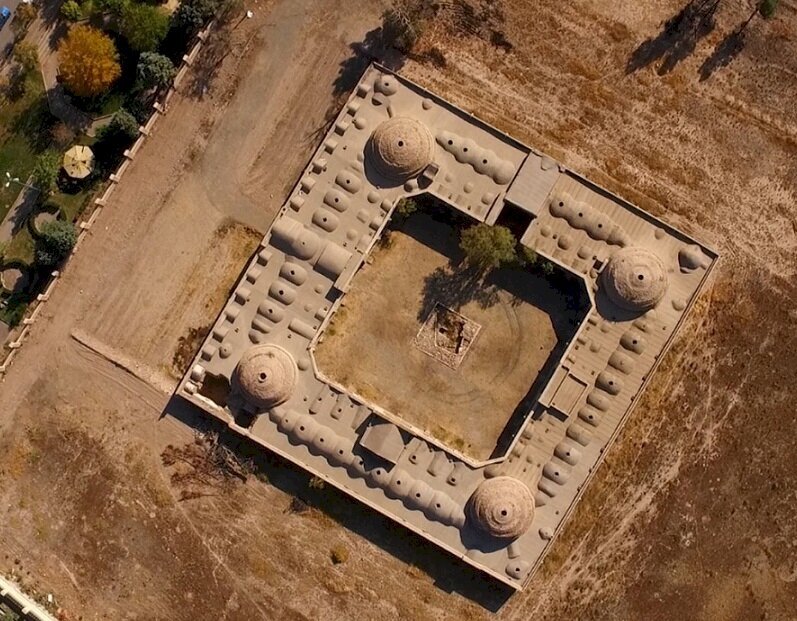Ancient caravanserai worthy of turning into a fancy hotel, official says

TEHRAN – The tourism chief of Alborz province has announced plans to turn a centuries-old caravanserai into a comfortable hotel.
“A fresh restoration work has commenced on Yengi-Imam caravanserai, which has considerable potential to become a 5-star hotel,” Rahim Khaki said on Monday.
Yengi-Imam caravanserai is one of the prestigious and valuable historical monuments that is situated along the ancient Silk Road, the official said.
Yengi-Imam, together with several other caravanserais, has been nominated for a UNESCO registration of the World Heritage list, Khaki said.
“Due to its traditional texture and atmospheric surrounding, the establishment of a five-star caravanserai hotel will be a good idea to accommodate domestic and foreign guests and to provide a source of income.”
In addition, side spaces of the caravanserai can be used for exhibition settings, such as ethnic fairs and handicraft sales exhibits, and local bazaars.
Considering that this caravanserai is nominated for UNESCO registration, all these actions are subject to obtaining the necessary permits and negotiations with the Ministry of Cultural Heritage, Tourism and Handicrafts, the official said.
Located in Alborz province near Tehran, the caravanserai showcases an exemplary form of Persian architecture, which emerged across the Silk Road. Experts say that the caravanserai offers a unique venue for exchanging goods and traditions among travelers coming from the most diverse cultures.
All four domes of the historic structure were fully restored after almost five months of work in 2020, enjoying financial support from the United Nations Educational, Scientific, and Cultural Organization.
The building takes the form of a square with a central courtyard. At the center of the courtyard, is a square platform accessed via a short flight of stairs. Four iwans (porticoes) open onto the courtyard on four sides.
The corners of the courtyard are angled, and passageways lead off of these corners onto octagonal, domed halls. Between the iwans and the corner passages are three shallow alcoves opening onto three small chambers (making for a total of six on each side of the courtyard). The octagonal domed halls lead into wide corridors that run behind the aforementioned chambers.
Caravanserai or caravansary is a compound word combining “caravan” with “sara”; the former stands for a group of travelers and the latter means the building. They often had massive portals supported by elevated load-bearing walls. Guest rooms were constructed around the courtyard and stables behind them, with doors in the corners of the yard.
Passing major roads in the country, one may see crumbling caravanserais, many of which were abandoned for ages. In the Information Age, such guest houses have largely lost their actual usage.
They often had massive portals supported by elevated load-bearing walls. Guest rooms were constructed around the courtyard and stables behind them, with doors in the corners of the yard.
Staying at or even just visiting a centuries-old caravanserai can be a memorable experience for many visitors to Iran because it allows them to experience the past and travel back in time. Narratives say it is not hard to fancy the hustle and bustle of merchants bargaining on prices, recounting their arduous journeys to one another while their camels chew hay!
The earliest caravanserais in Iran were built during the Achaemenid era (550 - 330 BC). Centuries later, when Shah Abbas I assumed power from 1588 to 1629, he ordered the construction of a network of caravanserais across the country. Such roadside inns were once constructed along ancient caravan routes in the Muslim world to shelter people, their goods, and animals. The former Silk Road may be the most famous example dotted by caravanserais.
The Islamic Republic has submitted an inclusive dossier on its caravanserais to the United Nations Educational, Scientific, and Cultural Organization. The dossier comprises obligatory data about a selection of 56 caravanserais, which are scattered across the ancient land. And the shortlist includes qualified caravanserais located in at least 24 provinces.
AFM
